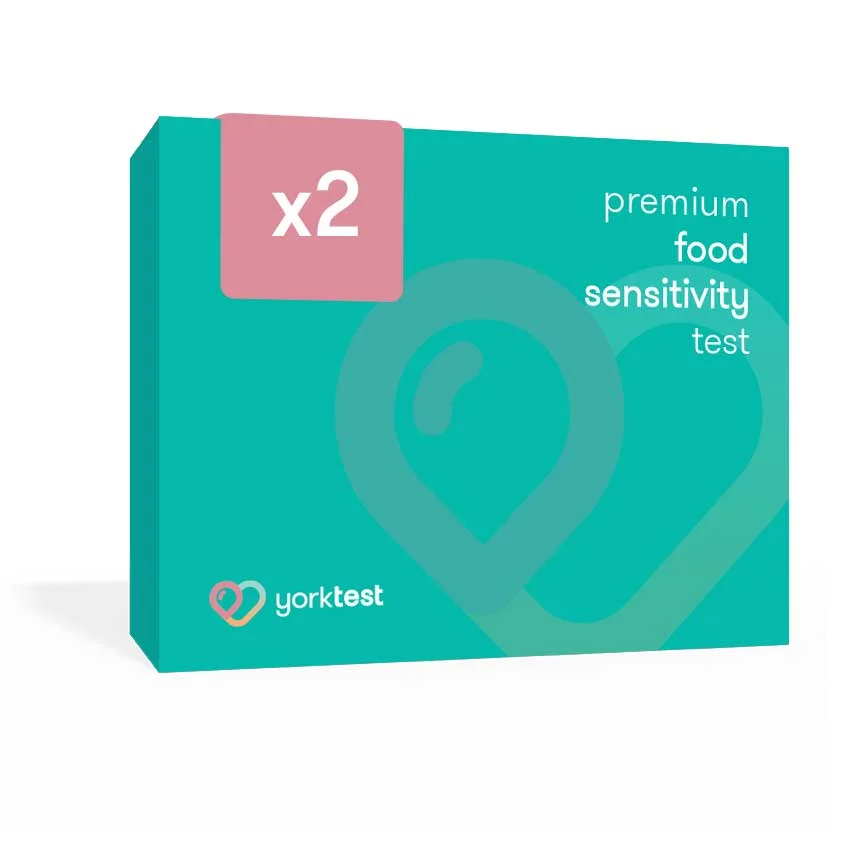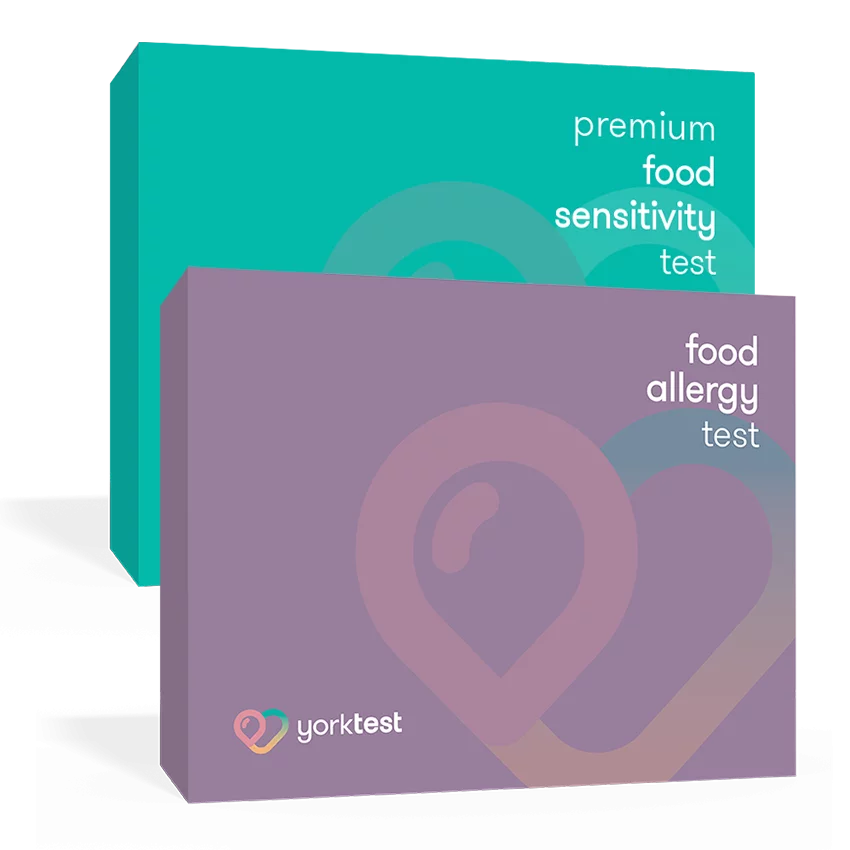
Almond Allergy: Facts, Foods to Avoid, and Symptoms of an Allergic Reaction
- What is an Almond Allergy?
- Foods and Products to Avoid with an Almond Allergy
- Cross-Reactive Tree Nuts and Botanical Relationships
- Hidden and Unexpected Sources
- Non-Food Products Containing Almond Derivatives
- Symptoms of an Allergic Reaction to Almonds
- Mild to Moderate Symptoms
- Skin Reactions
- Respiratory Distress
- Oral Allergy Syndrome (Pollen-Food Syndrome)
- Severe Reactions (Anaphylaxis)
- Delayed or Atypical Presentations
- Important Considerations
- How to Test for Almond Allergies
- Skin Prick Testing
- Blood Tests for IgE Antibodies
- Oral Food Challenges
- Elimination Diets
- Almond Allergy Treatment Options
- Emergency Medications
- Oral Immunotherapy (OIT)
- Avoidance Strategies
- Almond Allergy FAQs
- Will almond extract trigger a nut allergy?
- What is a sudden almond allergy?
- Can you have an almond milk allergy?
- How long do almond allergy symptoms last?
- How are almond allergy symptoms in adults different from children?
- Test for Almond Allergy with YorkTest
Almonds are praised for their nutritional benefits, being high in fiber, unsaturated fats, protein, and calcium. Studies suggest they can even help reduce cholesterol and heart disease risk. However, for a significant portion of the population, these nutritious tree nuts trigger problematic immune responses.
Almond allergies rank as the fourth most prevalent among tree nut allergies globally and are the third most common tree nut allergy in the United States, affecting between 9-15% of individuals already sensitized to tree nuts.[1] The situation is even more pronounced in the United Kingdom, with almonds representing the most common tree nut allergy among sensitized individuals, affecting 22-33% of cases.[2]
While tree nut allergies typically develop by age 2, they can persist throughout life, with only about 10% of affected individuals outgrowing them. Unlike many other food allergies, reactions to almonds and other tree nuts can be particularly severe, accounting for a significant portion of food-related anaphylactic fatalities alongside peanut allergies. Understanding this condition is crucial for those affected and their families, as even trace amounts can trigger potentially life-threatening reactions.
What is an Almond Allergy?
An almond allergy is fundamentally an immune system reaction to specific proteins found in almonds. When someone with this allergy consumes or comes into contact with almonds, their immune system mistakenly identifies these proteins as harmful invaders and mounts a defense response that manifests as allergy symptoms. The primary culprit behind severe allergic reactions to almonds is a protein called Pru du 6, also known as amandin, which is an 11S globulin that accounts for approximately 65% of the total protein content in almonds.[3]
Scientifically speaking, when almond proteins enter the body, they can leak into the bloodstream during digestion in susceptible individuals. The immune system then produces immunoglobulin E (IgE) antibodies specifically designed to target these “foreign” proteins. These antibodies attach to mast cells and basophils throughout the body, and when re-exposed to almond proteins, they trigger these cells to release chemicals such as histamine, causing the characteristic symptoms of an allergic reaction. In addition to Pru du 6, researchers have identified several other almond proteins as potential allergens, including Pru du 3, Pru du 4, Pru du 5, Pru du 8, and Pru du 10.
Although almonds belong to the Rosaceae family, which also includes fruits like apples, pears, peaches, and strawberries, they are classified as tree nuts from an allergy perspective. This classification is important because tree nut allergies are among the most common food allergies and are frequently associated with severe reactions, including anaphylaxis. Interestingly, recent research suggests that almond allergies may behave somewhat differently than other tree nut allergies—a clinical study of 603 oral food challenges found that only 5% of almond challenges resulted in reactions, compared to a 31% failure rate for other food allergens.[4] This indicates that, while still serious, almond allergies may have different clinical characteristics than allergies to other tree nuts.
Foods and Products to Avoid with an Almond Allergy
For individuals with almond allergies, strict avoidance extends far beyond merely skipping whole almonds. The condition demands heightened awareness of both direct and indirect exposure routes, given the widespread use of almond derivatives in food production and cross-reactivity patterns with other tree nuts.
Research indicates that between 20% and 40% of peanut-allergic individuals also react to other tree nuts like almonds, highlighting the importance of comprehensive dietary management.[5] This section outlines key categories of foods, ingredients, and products requiring vigilance, supported by clinical insights into cross-reactive relationships and hidden exposure risks.
Cross-Reactive Tree Nuts and Botanical Relationships
Almond allergies frequently coexist with sensitivities to other tree nuts due to shared protein structures. Immunological studies identify two primary cross-reactive groups:
- Juglandaceae family: Walnuts and pecans demonstrate strong cross-reactivity through shared storage proteins like Jug r 1 and Car i 1.
- Anacardiaceae family: Cashews and pistachios contain homologous 2S albumin proteins (Ana o 3 and Pis v 1) that trigger overlapping immune responses.[6]
Moderate cross-reactivity also occurs with hazelnuts (Cor a 9 and Cor a 11), Brazil nuts (Ber e 1), and macadamia nuts due to conserved lipid transfer proteins (LTPs). Clinical data shows that almost half of almond-allergic patients react to at least one additional tree nut, necessitating caution with all species until allergists confirm individual tolerances.[7] The FDA’s mandatory labeling recognizes 18 tree nuts, including coconut—a technical misclassification since coconuts are drupes, not true nuts. While most almond-allergic individuals tolerate coconut, 7-14% may react due to residual protein similarities.
Hidden and Unexpected Sources
Almond derivatives permeate global cuisines and processed foods through:
- Almond-derived products: Almond milk, almond oil, almond butter, and other products that contain almond extract or almond-derived ingredients should be avoided.
- Baked goods: Commercial breads, muffins, and pastries often use almond flour as a gluten-free alternative.
- Condiments: Pesto sauces contain pine nuts, while mole sauces may incorporate ground almonds.
- Meat substitutes: Vegan proteins frequently use almond-based texturizers in plant-based burgers and sausages.
- Confectionery: Marzipan (almond paste) appears in many different European chocolates, and pralines often combine multiple nuts.
Ethnic dishes pose particular risks—Indian kormas use almond paste as a thickening agent, while Middle Eastern baklava layers phyllo dough with pistachio-almond mixtures. Even seemingly safe products like cereals may contain almond-derived vitamin E (d-alpha-tocopherol) as a preservative.
Non-Food Products Containing Almond Derivatives
Dermal and inhalation exposures present underrecognized hazards:
- Cosmetics: Luxury skincare lines use sweet almond oil as an emollient.
- Pharmaceuticals: Some vitamin supplements employ almond-derived excipients in capsule coatings.
- Household items: Almond shell fragments appear in natural potpourri mixes and gardening mulches.
The FDA’s Food Allergen Labeling and Consumer Protection Act (FALCPA) mandates “contains tree nuts†declarations but doesn’t regulate advisory statements like “may contain.†Individuals should treat all such warnings as definitive contamination risks.
Symptoms of an Allergic Reaction to Almonds
Almond allergies can trigger a wide range of physical reactions, from mild discomfort to life-threatening emergencies. Symptoms typically appear within minutes of exposure but may take up to two hours to develop. Recognizing these signs early is critical for managing reactions effectively.
Mild to Moderate Symptoms
Most reactions begin with localized symptoms affecting the skin, mouth, or digestive system, including but not limited to:
- Itching or tingling in the mouth, lips, or throat is often the first noticeable sign, sometimes accompanied by redness or hives around the face and neck.
- Swelling (angioedema) of the eyelids, lips, or tongue may follow, creating a sensation of tightness.
- Gastrointestinal distress—such as stomach cramps, nausea, or vomiting—is common, particularly in children.Â
Some individuals may also experience diarrhea or a runny nose during this stage.
Skin Reactions
Hives (raised, itchy welts) frequently develop on the skin, often spreading beyond the initial contact area. In some cases, a rash resembling eczema may appear hours after exposure, especially in individuals with sensitive skin or existing dermatological conditions.
Respiratory Distress
As reactions progress, respiratory symptoms can emerge. These include nasal congestion, sneezing, or a scratchy throat. More concerning are signs of airway involvement, such as wheezing, shortness of breath, or a hoarse voice, which indicate inflammation in the lungs or throat. Difficulty swallowing (dysphagia) may occur due to swelling in the pharynx.
Oral Allergy Syndrome (Pollen-Food Syndrome)
Individuals with birch pollen allergies may experience oral allergy syndrome after eating raw almonds. This condition causes temporary itching or tingling in the mouth without systemic involvement. However, symptoms can escalate if the almonds are consumed in large quantities or if the person is sensitive to heat-resistant almond proteins.
Severe Reactions (Anaphylaxis)
The most dangerous response is anaphylaxis, a whole-body reaction requiring immediate medical attention. Warning signs include:
- Swelling of the throat that obstructs breathing
- A sudden drop in blood pressure (dizziness or fainting)
- A rapid, weak pulse
- Confusion or sense of impending doom
Anaphylaxis often involves multiple symptom groups—for example, simultaneous hives and vomiting with wheezing. Unlike milder reactions, this condition can worsen rapidly, making prompt use of an epinephrine auto-injector essential.
Delayed or Atypical Presentations
In rare cases, allergy symptoms like fatigue, headaches, or persistent cough may develop hours after exposure. These delayed responses are more common in people with coexisting conditions like asthma or chronic rhinitis.
Important Considerations
- First reactions may be mild, but subsequent exposures can become severe
- Skin contact with almond-containing products (lotions, shampoos) may cause localized itching or redness
- Children often exhibit different symptoms than adults—infants might rub their tongues against their palates or become unusually irritable during reactions
If any concerning symptoms develop after almond exposure—especially breathing difficulties or throat swelling—seek emergency care immediately. Even mild reactions warrant follow-up with an allergist for proper testing and management planning.
How to Test for Almond Allergies
Accurate diagnosis of almond allergies requires a combination of clinical evaluation and specialized testing. Unlike self-diagnosis, which can lead to unnecessary dietary restrictions, professional allergy testing helps confirm food sensitivities and guides safe management strategies. Here’s a breakdown of the most reliable methods used by healthcare providers.
Skin Prick Testing
Skin prick tests (SPT) are often the first step in diagnosing almond allergies. During this quick in-office procedure, an allergist places a small drop of almond protein extract on the forearm or back and gently pricks the skin’s surface with a sterile probe. If IgE antibodies to almond proteins are present, a raised, itchy bump (called a wheal) surrounded by redness will typically appear within 15–20 minutes.
While skin tests are highly sensitive—meaning they rarely miss true allergies—they can produce false positives about 50–60% of the time. For example, a positive result might occur if you’re allergic to birch pollen (which shares proteins with almonds) but can safely eat almonds. Allergists interpret results alongside your medical history to avoid overdiagnosis. Patients taking antihistamines must pause them before testing, as these medications can suppress reactions.
Blood Tests for IgE Antibodies
Blood tests measure the level of almond-specific IgE antibodies in your bloodstream. Labs like YorkTest use advanced methods to detect these antibodies, which correlate with allergy severity. With YorkTest’s Food Allergy Test, a higher IgE level suggests a greater likelihood of reacting to almonds, but results aren’t definitive—some people with elevated IgE never experience symptoms.
These IgE blood tests are ideal for individuals with skin conditions (like eczema) that could interfere with SPTs or those unable to stop antihistamines. However, blood tests alone can’t predict reaction severity or distinguish between true almond allergies and cross-reactivity with pollen or other nuts.
Oral Food Challenges
Considered the gold standard for diagnosis, supervised oral food challenges involve consuming gradually increasing amounts of almond under medical supervision. Starting with a tiny dose (often a crumb), patients are monitored for symptoms over several hours. Challenges are typically recommended when skin or blood tests are inconclusive or when there’s a chance you’ve outgrown the allergy.
Research shows almond challenges have a 95% pass rate—much higher than other nuts like cashew or walnut—and reactions, when they occur, are usually mild.[4] However, allergists still prepare for emergencies by having epinephrine and other treatments on hand.
Elimination Diets
Under medical guidance, patients remove almonds and all tree nuts from their diet for 2–4 weeks, then slowly reintroduce them while tracking symptoms. While useful for identifying triggers, elimination diets aren’t standalone diagnostic tools. They’re often paired with testing to confirm findings.
Almond Allergy Treatment Options
While strict avoidance remains the cornerstone of almond allergy management, recent advances in immunotherapy and pharmaceutical interventions offer new hope for reducing reaction risks. Current treatment strategies focus on three key areas: emergency response, gradual desensitization, and immune system modulation.
Emergency Medications
All individuals diagnosed with almond allergy require immediate access to epinephrine auto-injectors (EpiPen®, AUVI-Q®), the first-line treatment for anaphylaxis. Studies show administering epinephrine within 5 minutes of symptom onset reduces hospitalization rates by 65% compared to delayed use. For mild localized reactions (itching, hives), second-generation antihistamines like cetirizine or loratadine can provide symptom relief without the drowsiness associated with older drugs like diphenhydramine.
Oral Immunotherapy (OIT)
OIT protocols involve consuming precisely measured doses of almond protein under medical supervision to gradually increase tolerance. A 2025 clinical trial demonstrated between 67% and 92% of participants achieved partial desensitization—enough to safely ingest 2-3 almonds without severe reactions.[8] Treatment typically spans 6-12 months, with weekly clinic visits to monitor for adverse effects.
Key innovations improving OIT safety include:
- Irradiated almond flours sterilized via gamma radiation to eliminate microbial contaminants while preserving allergenic proteins
- Component-resolved dosing tailored to individual IgE profiles targeting Pru du 6 and other major almond allergens
Patients must continue daily maintenance doses indefinitely, as stopping OIT leads to regained sensitivity in 80% of cases within a year.
Avoidance Strategies
Despite therapeutic advances, meticulous avoidance remains essential:
- Label literacy: Identify hidden almond derivatives like amygdalin (E505) or Prunus dulcis extract
- Cross-contact prevention: Use dedicated nut-free appliances and avoid bulk bins
- Dietitian consultation: Ensure nutritional adequacy while eliminating high-risk foods
While no cure exists yet, these multimodal approaches empower patients to manage risks proactively. Regular follow-ups with allergists (every 6-12 months) ensure that treatments remain aligned with the latest clinical evidence.
Almond Allergy FAQs
Understanding almond allergies helps individuals manage risks and make informed dietary choices. Below are answers to five common questions about this condition.
1. Will almond extract trigger a nut allergy?
Natural almond extract contains proteins from almonds and can trigger reactions in those with tree nut allergies. However, imitation almond extract (artificially flavored) typically lacks allergenic proteins and is generally safe. Always check labels for terms like “pure almond extract” or “natural flavoring,” and contact manufacturers if unsure.
2. What is a sudden almond allergy?
A sudden almond allergy refers to an adult-onset reaction in someone previously tolerant to almonds. This can occur due to cross-reactivity with pollen (oral allergy syndrome) or immune system changes. Unlike childhood allergies, sudden adult reactions may involve severe symptoms like throat swelling, even with prior uneventful consumption.
3. Can you have an almond milk allergy?
Yes—almond milk contains the same proteins as whole almonds and can cause allergic reactions. Symptoms range from rashes and itching to gastrointestinal distress or anaphylaxis. Those with almond allergies should avoid almond milk and opt for alternatives like oat or soy milk.
4. How long do almond allergy symptoms last?
Mild symptoms (hives, itching) often resolve within a few hours with antihistamines. Severe reactions, like anaphylaxis, require immediate epinephrine and may persist for 24–72 hours without treatment. Always monitor symptoms and seek emergency care for breathing difficulties.
5. How are almond allergy symptoms in adults different from children?
Adults more frequently experience respiratory issues (wheezing, throat tightness) and severe swelling, while children show higher rates of vomiting, eczema-like rashes, and irritability. Infants may react with nonspecific signs like back arching, whereas adults often report oral itching from pollen cross-reactivity.
Test for Almond Allergy with YorkTest
The At-Home Food Allergy Test from YorkTest offers a reliable and convenient way to identify almond allergies and other food sensitivities. Using advanced IgE antibody testing, this at-home kit provides clinically accurate results comparable to those used by healthcare professionals.
The process is simple—just collect a small blood sample using the provided kit, send it to YorkTest’s state-of-the-art laboratory, and receive detailed results within seven days. Plus, their expert nutritional therapists offer personalized guidance to help you manage your allergy effectively, making YorkTest a trusted partner for improving your health and well-being. Learn more about the test or view all tests from YorkTest.
Resources:
- Bezerra M, Ribeiro M, Igrejas G. An Updated Overview of Almond Allergens. Nutrients. 2021 Jul 27;13(8):2578. doi: 10.3390/nu13082578. PMID: 34444737; PMCID: PMC8399460.
- Thermo Fisher Scientific. Almond Allergen Fact Sheet. 2022. PDF file.
- Bezerra M, Ribeiro M, Igrejas G. An Updated Overview of Almond Allergens. Nutrients. 2021 Jul 27;13(8):2578. doi: 10.3390/nu13082578. PMID: 34444737; PMCID: PMC8399460.
- Virkud YV, Chen YC, Stieb ES, Alejos AR, Renton N, Shreffler WG, Hesterberg PE. Analysis of Oral Food Challenge Outcomes in IgE-Mediated Food Allergies to Almond in a Large Cohort. J Allergy Clin Immunol Pract. 2019 Sep-Oct;7(7):2359-2368.e3. doi: 10.1016/j.jaip.2019.03.049. Epub 2019 Apr 8. PMID: 30974209; PMCID: PMC7380558.
- Bublin M, Breiteneder H. Cross-reactivity of peanut allergens. Curr Allergy Asthma Rep. 2014 Apr;14(4):426. doi: 10.1007/s11882-014-0426-8. PMID: 24554241; PMCID: PMC3962743.
- Goetz DW, Whisman BA, Goetz AD. Cross-reactivity among edible nuts: double immunodiffusion, crossed immunoelectrophoresis, and human specific igE serologic surveys. Ann Allergy Asthma Immunol. 2005 Jul;95(1):45-52. doi: 10.1016/S1081-1206(10)61187-8. PMID: 16095141.
- Kabasser S, Hafner C, Chinthrajah S, et al. Identification of Pru du 6 as a potential marker allergen for almond allergy. Allergy. 2021; 76: 1463–1472. https://doi.org/10.1111/all.14613
- McHenry M, Bégin P, Chan ES, Latrous M, Kim H. Food oral immunotherapy. Allergy Asthma Clin Immunol. 2025 Feb 12;20(Suppl 3):82. doi: 10.1186/s13223-025-00948-5. PMID: 39940042; PMCID: PMC11823072.







